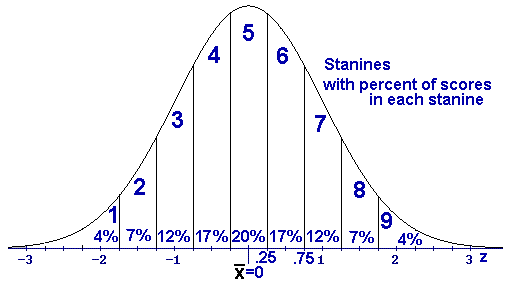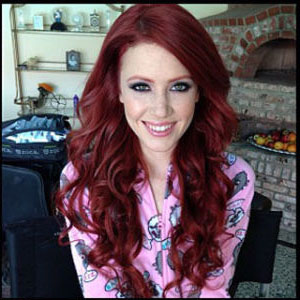Last week I wrote about the Archetypical Modern Women. It was my most popular post ever by views and was also one of my most commented posts as well. Most manospherians liked the post, but there was one common criticism that seemed virtually unanimous: I overrated the woman, she was not a 7. The consensus seemed to be she was a 5, although a couple commented she was a 3 or even lower.
I explained my reasoning in the comments: “she’s thin, young-ish with a moderately cute face. She’s not beautiful, but a youngish, plain sort of pretty with a slim build would fit my definition of a 7.”
I generally don’t use the scale in real life; in fact, I can not remember ever having using it in RL, but there’s a small possibility I have. In normal conversation, the scale is kind of silly; the descriptors of beautiful, cute, unattractive, etc. are usually more than good enough and are more humanizing. (That and a numerical scale sounds sort of spergy, and I have enough problems with that as it is).
On the other hand, I occasionally use it on the blog as it is a simple comparative method; more human descriptor cans be open to interpretation and can have different meanings. While a numerical scale at least gives the illusion of objectivity.
But after the criticism of my assigning the label 7 I wanted to figure this out, my inner data nerd was aroused, so I’m going to analyze this more. I’ll warn you now, this is going to get spergy and is going to be dehumanizingly analytical.
Oh, and before I begin, Truthmosis at RotK has a post up on the scale that I came across while writing this. Check it out.
I’d also like to point out that, to some degree, beauty is subjective, so a numerical scale is not the be-all-end-all of female beauty. There are certain objective metrics of beauty: a 0.7 hip-to-waist ratio, symmetry, and other such indicators of fertility and health, that (almost) all men are naturally drawn towards. These can be a basis for an “objective” 1-10 scale.
But outside of that, there are numerous subjective factors on which men disagree. For example, I really like fair-skinned, light-haired, innocent-looking women (ie. cute women) and detest tattoos and piercings. A tongue piercing disgusts me and is an automatic 3-point drop. So, if I were to rate a woman with a tongue piercing a 5, others who don’t find it disgusting, might rate that woman an 8. Another example: I’ve never figured out why the Captain likes Jennifer Aniston or many men like Angelina Jolie; never seen the appeal.
Anyway, with that caveat out of the way, here we go.
****
The first thing to do when creating a scale is decide the system the scale will use. The two major ones are the bell curve and the decile system. Men as a whole tend to use a bell curve system (on a 5-point scale), but I’ve tended to think in a decile system.
In a normal bell curve system (and looks would be normally distributed) a scale would be related to standard deviation. In standard deviation, 68% of all women would fall within one standard deviation from the mean, while 95% of all women would fall within two, and 99% would fall within three.
In a 1-10 scale 5 would be the mean. Most like we’d use 2 sigma (SD:2.5) above the mean to signify a 10 and 2 sigma below to signify a 0. 1 sigma would make far too many 10s, and 3 sigmas would mean only 2% of woman are above a 7+.
A 2 sigma scale would mean means that about 2% of woman would be 10s and 2% would be 0s. About 14% would be 7.5-9.5s and another 14% of woman would be 0.5-2.5s. The vast majority of woman (68%) would be 2.5s-7.5s.
We could also use a 2 sigma to signify 1s and 9s (SD:2). On this scale 2% of woman would be 9+ and another 2% would be below <1. 14% of woman would be 7-9 and another 14% of woman would be 1-3. The large majority of woman (68%) would be 3-7s.
If I were to use a bell curve, the latter is likely the one I would use because no one uses 0 on the 1-10 looks scale and many think (and I agree) that there are no 10s. Limits could easily be put at .1 and 9.9 without negatively effecting the rest of the scale. Not to mention the use of whole numbers rather than decminals greatly simplifies the scale.
So, if we’re scaling women’s looks on a 1-10 (Mean:5, SD:2) we can use a stanine scale to find the proportion of woman at each number.
On the other hand, if we use a decile system 10% of women would be 1s, 10% would be 10s, etc.
The former is more useful for statistical calculation, the latter is easier to use for everyday talk. It is a lot easier to calculate: she’s a 10 because she’s in the top 10% of people, she’s a nine because she’s in the 80-90% range, etc. than it is to calculate: she’s a 9 because she’s 2 SD above the mean and is in the top 4% of woman.
In more practical immediate effect, the former will result in a lot of 4-6s and few 1s and 9s, while the latter will result in an even distribution of all types of woman.
****
Knowing this, how can we systematize the calculation of where an individual woman falls on this scale. That”s likely impossible because beauty is to some degree subjective, but we can give it a shot. This analysis will focus on adult women of child-bearing age because menopausal women are no longer sexually attractive.
In the US 32% of women aged 20-39 are obese. If we used the decile system, that would mean the obese take up all of 1s through 3s. If we used the bell curve, the obese take up 1-3 and most of the 4s as well.
But obesity is not the only indicator of unattractiveness, some women just have the bad luck to be born with a deformity of an extremely unattractive face. If, for simplicities sake, we estimated that 8% of women are simply born deformedly ugly (not unattractive or plain, just ugly), that means that on both scales 1-4s are made up of the deformed and fat.
So, simply not being obese or deformed would immediately make a woman a 5 in either scale.
Back to weight, in addition to the the obese are the overweight. 64% of adult women are either obese (BMI >= 30) (36%) or overweight (BMI of 25-29.9) (28%), so we’ll assume the 28% overweight rate hold for women 20-39. So, we now have 60% of women aged 20-39 who are overweight or fat, but let’s remove 5 percentage points because the BMI does sometimes classify fit people with muscle as being overweight. So about 55% of child-bearing age woman are unattractive due to be overweight or obese.
I can not find any numbers on the percentage of woman that are unattractive due to face alone, so I’ll have to make up some assumptions. Let’s assume, for the sake of ease, that 10% of women who are not fat, have faces that are unattractive enough, that a moderately fat woman with a decent face would rate higher on a scale.
With that assumption we now come to 65% of women are either fat or as unattractive as a fat woman.
(Check out this BMI visualizer to understand what is meant by overweight and obese).
In a decile scale that means that a woman who is not fat or equally unattractive is automatically a 7; in a normal distribution scale a woman who is not fat or equally unattractive is automatically a 6.
This gives us a starting base.
I do not have the time or ability to start messing around with the ins and outs of symmetry, eye size, distance between the eyes and mouth, and all the other micro-variations that distinguish beauty. Suffice to say though that most men can tell objective beauty of these micro-variations fairly easily.
So, we can assume they’d mostly agree.
****
Based on this here’s a 1-10 scale we can use based on the decile system.
1-4: Obese and/or deformedly ugly
5: Fat or ugly
6: Chubby with a cute face or unattractive
7: Plain, not fat
8: Somewhat attractive
9: Slim and pretty
10: Curvy and beautiful
Here’s on based upon normal distribution:
1-4: Obese and/or deformedly ugly
5: Fat, chubby with an unattractive face, or ugly
6: Plain, not fat or chubby with a cute face
7: Slim and pretty
8: Curvy and beautiful
9: The best of the best (very rare)
10: Does not exist
The normal distribution lumps the middling and moderately attractive categories together but allows for the distinguishment of the really beautiful from the beautiful, while the decile scale allows for more distinguishment from the middling, but lumps all the beautiful together under 10. The decile system leaves more distinguishment in those of middling beauty, but lumps the good looking into 2 categories.
From the impression I get from people write on the manosphere, they seem to use the normal distribution system. If we go back to Truthmosis’ discussion of the topic we can see that his scale more or less matches the normal distribution, as does his picture scale.
So, I guess I should start using the normal distribution scale to match up with others around here.
****
Anyway, back to the women who started this discussion:

As we can see, she’d probably be plain, not fat. So, my initial impression of her as a 7 on the decile system was correct. If we used a normal distribution she’d be a 6.
Someone ranking her a 5 is implying she’s ugly, which I do not think this picture supports. Whoever ranked her as a 3 is just dead wrong; she’s neither obese nor deformedly ugly.
****
A few last notes:
I knew the obesity crisis was bad, but I was surprised that 64% of adult women and 74% of adult men are overweight. That’s just plain nuts.
Also, only about 40% of women would be attractive enough to be worth even considering marrying (not even including other factors). So, if you’re looking to marry, make sure you’re in the top 40% of men or you’re going to end up with someone fat or unattractive.
I hope you’ve enjoyed my spergy little analysis.


